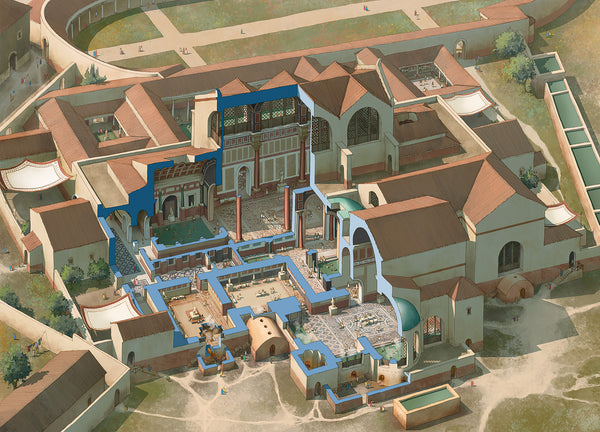Exciting Archaeology in Ireland
By Owain Williams
Some very interesting archaeological news!
Excavations on the headland of Drumanagh, roughly fifteen miles north of Dublin, has uncovered the 2000-year-old remains of a fig. This may not seem like a major discovery, but it is an important piece of the puzzle that is Hiberno-Roman relations. According to Meriel McClatchie, director of the University College Dublin Ancient Foods research group at University College Dublin School of Archaeology, “Finds of fig elsewhere in northern Europe are thought to reflect imports from southern Europe, and it is likely that this new Irish discovery travelled a similar distance.” So, this fig is a testament to the trade of foodstuffs between Ireland and the Roman Empire.

The Romans were certainly aware of Ireland’s existence. Roman soldiers stationed at forts in western Wales, such as that at Caer Gybi (Holyhead), would have been able to see the Wicklow Hills in Ireland, which are visible on a clear day, especially at sunset. Locals in the area would also have been able to tell the Romans about the island. According to Tacitus, Agricola even considered invading the island under the pretense of restoring a petty king, believing it would take little more than a single legion and some auxiliaries (Agricola, 24). The geographer Ptolemy, active in the first half of the second century AD, included Ireland in his Geography, possibly working from a first century AD source (Geography 2.1). An anchor, possibly Greco-Roman, was discovered at Porth Felen, at the western tip of Penrhyn Llŷn in North Wales, in 1974. Later, in the fourth and fifth centuries AD, Scotti ships raided the coast of Britain, sailing from Ireland (see, for example, Ammianus Marcellinus 20.1.1; 26.4.5; 27.8.5).

Christine Baker, Heritage Officer and archaeologist at Fingal County Council, said that “Our excavations have revealed more of the story of those living and working at Drumanagh ... By these windswept cliffs people were consuming spelt bread, olive oil and figs, drinking from glass vessels and fine ceramic cups while wearing brooches and glass beads”, suggesting a connection to the Wirral and Chesire. Other artefacts have been discovered at the site, including objects that came from Roman Gaul and the Iberian Peninsula.
As always, archaeology is very exciting!


3 comments
Paul, thanks for the extra quote from Tacitus! It seems Ireland was certainly known to the Romans.
Féidhlim, thank you for your suggestion! We are always on the lookout for topics that take us beyond the Mediterranean basin. Unfortunately, the further you go, the harder it is to find people who can write about the topics and to find relevant images. The very first issue of Ancient History covered ancient exploration. Perhaps it is time to revisit the topic soon.
Is there any chance the magazine for AH would consider doing a rumours episode where you discuss gossip, rumours and myths relating to landmasses outside of a peoples known territory or known atlas? For example, what did the Romans think of Britain before Caesar invaded or What did Persia discuss about the Eastern empires, or perhaps even what did other Island nations, such as the Japanese think about other kingdoms? Would be interesting to find out all the taboos and horror stories told to children or myths educated in academy. We know for example that Alexander grew up hearing about the edge of the world but what exactly would he have known and have been told?
This was a very interesting piece and I look forward to more ancient history from outside of the usual suspects such as Rome or Greece. ^^
A fascinating report that adds to our understanding of the relationship between Roman Britannia and neighboring Hibernia. According to Tacitus, son-in-law of Agricola, the governor of Britannia, “The approaches and harbors [of Hibernia] are known due to trade and merchants.” (Freeman, Philip. Ireland and the Classical World. Austin, Texas: University of Texas Press, 2001, p.57). This should come as no surprise, with Roman Britannia literally in sight of the Hibernia and both civilizations offering goods that the other found worthwhile.